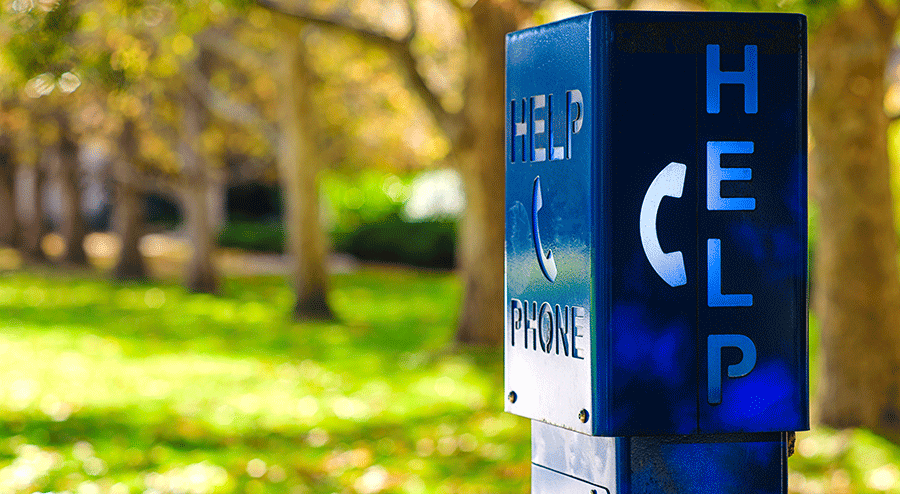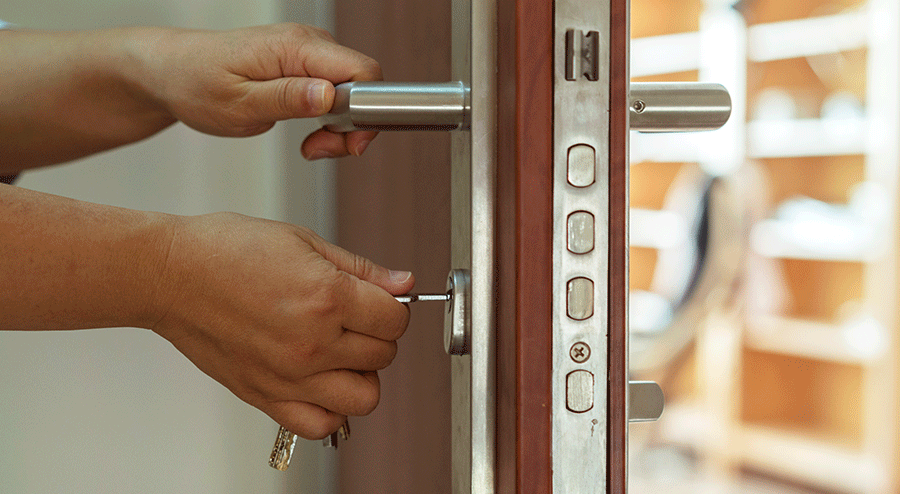Sending your child off to college may be one of the most anxiety-provoking things you ever have to do as a parent. It creates an emotional separation that often consists of feeling a void, no longer feeling needed, and other challenges associated with giving up control.
However, one additional concern that many parents have deals with the young adult’s safety during their freshman year of college, which is usually their first long stint away from home. Thanks to the Jeanne Clery Act, it makes it easier to know whether this should be a major concern.
The Jeanne Clery Act and Campus Crime

The Jeanne Clery Act is legislation that requires all colleges and universities that receive federal funding to compile and disseminate a public annual security report to students October 1st of each year. According to the Clery Center, this report must contain campus crime statistics for the prior three years, as well as the actions the college or university is taking to improve the safety of its students and staff.
While this is helpful to parents today when determining which academic institutions offer their child the safest campuses, the act was born from tragedy when, in 1986, Jeanne Clery was raped and murdered in her college dorm. She was just 19 years old at the time and her parents, Connie and Howard Clery, were unaware of the dangers that existed on their child’s campus.
Deciding that no future parent should suffer the same fate, the Clerys lobbied on Capitol Hill and ultimately helped create the policy known today as the Jeanne Clery Act (the Clery Act for short).
In addition to having this annual reporting requirement, the Clery Act mandates that colleges and universities supply crime data for four specific categories:
- Criminal offenses – homicide, sexual assault, aggravated assault, robbery, burglary, motor vehicle theft, and arson
- Hate crimes – all of the criminal offenses plus simple assault, intimidation, larceny-theft, and damage or vandalism of property
- VAWA offenses – VAWA stands for the Violence Against Women Act and includes crimes related to domestic violence, dating violence, and stalking
- Disciplinary actions – colleges must also share any arrests or referrals for disciplinary action that arise from weapons law violations, drug abuse violations, or liquor law violations
When reporting, these institutes of higher learning must not only include data about on-campus crimes, but also crimes that occur on any public property within campus boundaries, public property immediately adjacent to campus, and non-campus buildings or property used for educational purposes and frequented by students, whether owned by the college or university itself or an officially recognized student organization.
So, what do the numbers reported under the Clery Act say about colleges or universities nationwide?
Campus-Related Crime Stats Nationwide

According to the 2017 National Crime Victims’ Rights Week Resource Guide: Crime and Victimization Fact Sheets, crimes reported on campuses across the nation have decreased by 35 percent as a whole since 2014. This number includes 11,000 college campuses and represents a total of approximately 78 million students.
It should also be noted that one category of reported crimes has not only increased over this same period of time, but increased dramatically. In 2005, 5,522 forcible sexual offenses were reported on campuses nationwide. In 2014, that number was 17,441, or more than triple.
Though this may sound extremely grim, it’s important to remember that these numbers only represent reported crimes. Therefore, this huge increase doesn’t necessarily mean that more sexually-based crimes are being committed nowadays, just that they’re being reported more frequently.
In fact, 9 out of 10 colleges report zero rapes per year according to this report. And if a sexual offense were to occur, the risk is highest in the first few months of school—between August and November—according to NBC News, a timeframe that many refer to as “the Red Zone.”
The crimes reported most often on college campuses are burglaries at 22,826 incidents per year. Next are forcible sexual offenses (17,441 incidents), followed by motor vehicle theft (5,059 incidents), aggravated assault (5,059 incidents), robbery (3,399 incidents), and arson (1,024 incidents). There are also a smaller number of non-forcible sexual offenses (169) and murders (43) that occur on campuses as well.
Of these, more than half (56 percent) are reported as occurring on campus, though the report suggests that this number may not be totally accurate since the Clery Act requires that public areas adjacent to campus be included. One in four (28 percent) occurred in residence halls.
While it’s great to know these numbers, your next question is likely about safety numbers for the individual campuses on your child’s educational radar. How do you find those?
Researching Student Safety at Individual Colleges and Universities

Once your child chooses the school he or she wants to attend, you may be tempted to scour the internet to see if that particular college is on the list of safest schools in the nation, or if crime is so bad on that campus that it made the worst list. However, Campus Safety magazine warns that there are some dangers to taking this route.
The information contained on these lists may technically be accurate, it can also be misleading, according to Campus Safety. This is because many lists don’t compare colleges and universities based on size, student population, or other factors that can make the crime statistics appear worse or better than they really are.
Instead, Campus Safety recommends that you do your homework yourself by asking questions directly to the administrators at the school or schools your child wishes to attend. U.S. News & World Report shares that some of the questions you might want to ask include:
- What is the college or university doing to create a safer campus?
- If there is an on-campus emergency, what systems are in place to communicate this to the students?
- Who is responsible for on-campus safety: local police or university security?
- If a sexually-based crime occurs on campus, who handles it?
- Are students educated about campus safety? If so, how?
- If my child moves off campus, does the school still offer any protections?
- How big of an issue are drugs and alcohol at the school?
- How are violations of school rules (and laws) handled by the school?
- What has the school done to better prepare for natural disasters?
Answers to questions like these can help you better understand how safe a specific college or university is, as well as where campus safety and security fall on its list of priorities.
You can also pull up stats on individual schools on your own and do the comparisons yourself. The U.S. Department of Education offers various online tools that make this process easier. For instance, you can go to their website and pull data for individual schools one by one, or you can select up to four schools and compare them in an easy-to-read chart that uses all of the data provided via the Clery Act.
Should you do the latter, on the actual comparison screen, you can also check a box so it compares based on numbers per 1,000 students. This helps give you more of an apples-to-apples comparison for the schools your child wants to attend.
Behaviors That Can Put College Freshman at Risk
In addition to knowing how many crimes are committed on the campus of your child’s school of choice, the other side of the safety equation involves helping your soon-to-be freshman understand that there are certain things he or she can do that can increase the risk of being victimized. Here are a few to consider.
Using Drugs and/or Alcohol
Before you respond by saying that your child has a good head on his or her shoulders so you don’t have to worry about drug or alcohol use, research says otherwise. For instance, one study found that many parents are “overoptimistic” and generally underestimate their child’s use of marijuana, alcohol, and tobacco.
In fact, 44 percent of college students binge drink (consume five or more drinks in one sitting) and 14-29 percent smoke, according to this study. And research published in the journal Addictive Behavior adds that one out of every three (30 percent) report that they’ve used marijuana prior to college entry. An additional 8.5 percent who had never tried marijuana before end up trying it their freshman year.
One problem associated with drug and alcohol use, with kids this age especially, is that both of these substances impair judgment. This increases the likelihood that they will put themselves in unsafe situations, while also decreasing their ability to respond appropriately if faced with some type of danger.
There’s also the concern that your child could drink too much, resulting in alcohol poisoning or worse, alcohol overdose. The Centers for Disease Control and Prevention (CDC) reports that there is an average of 2,221 alcohol poisoning deaths per year and individuals in the 15 to 24-year-old age range made up 5.1 percent of these deaths (113). Males die almost three times more than females, with 85 versus 28 deaths, respectively.

Risky Sexual Behavior
Research has also found that college students tend to engage in riskier sexual behavior, which includes practicing unsafe sex and having sexual interactions with unknown partners. What causes this type of behavior in these young adults? One 2018 study found that drinking was a huge culprit, especially if the drinking was socially motivated.
Of course, this can create a number of unintended consequences. In a paper published by the University of Missouri-Columbia Department of Psychology, 15 percent of college students have either become pregnant themselves or got someone else pregnant. Another 12 to 25 percent of students have contracted an STD (sexually transmitted disease), with this last number being higher for females than males.
Risky sexual behavior can also put the subjects involved in the position of being victimized sexually or, at a minimum, of being less able to defend themselves should their partner try to do things they don’t want to do.
Walking on Campus Alone or at Night
Another safety concern is walking alone on campus, especially if it’s dark out. Unfortunately, many Americans in general don’t realize the risks associated with this simple, yet dangerous, behavior.
In November 2017, a Gallup poll found that only 3 in 10 Americans are afraid to walk at night alone within one mile of their residence, a number that signifies a 52-year low. Yet, TIME reports that “most evil deeds are done under cover of darkness,” citing that some studies have connected dimmer lighting with shadier behavior.
Plus, darkness offers the opportunity for criminals to hide more easily, while also making them harder to identify if they do strike.
College-Based Mass shootings
In May 2018, just 21 weeks into the year, CNN reported that 23 school-related shootings resulting in injury and/or death had occurred. Of these, one-third happened on college and university campuses.
Unfortunately, mass shootings have become a reality for students at all stages of the educational journey. Though this makes it hard for parents of any-age student to send their children off to earn an education, it can be particularly difficult if you’re hundreds—if not thousands—of miles away and can’t be right by their side should something like this happen.
Promoting College Safety With Your Soon-to-be Freshman
Knowing that dangers like these can and do exist on college campuses across the nation, what are some actions you can take to help better prepare your child, increasing his or her safety during their first year of study? There are quite a few.
Teach Them How to not Become an Easy Target

If a criminal were to stand face-to-face with a hard target and an easy target, they’ll likely take the easy target every time. Therefore, the harder your child makes it for criminals to victimize him or her, the lower the likelihood that this will occur.
What can your child do to become a harder target? Psychology Today offers a few suggestions:
- Be alert. The more aware your child is of his or her surroundings at all times, the less likely someone will be able to sneak up and commit a crime.
- Make eye contact. When passing others on campus, make eye contact with them briefly. This lets them know that you’ve seen them, making you less appealing as a target because you can potentially identify them.
- Walk with purpose. Walking with confidence also decreases the likelihood that your child will be a target. NBC News shares that a great way to remember how to do this is to remember the acronym STAAR:
- Stride with forceful, confident steps
- Tall with shoulders back and chin up
- Arms bent naturally and swinging as they walk
- Awareness of surroundings
- Relaxed, remaining “calm, cool and collected”
- Approach businesses instead of strangers. If your child does get lost or need directions, encourage him or her to stop at a business and ask for help versus stopping someone on the street.
- Stay in well-lit areas. If your child has to be out after dark, such as when taking night classes, encourage them to stay in areas that are well-lit. The more visible they are, the safer they are.
- Keep money and expensive valuables out of sight. If criminals suspect that they can make off with a good haul from your child, that’s what they’ll want to do. However, if nothing of value is visible, they may just leave your child alone.
Student Caffé adds that, when walking alone, during the day or at night, students should “practice good pedestrian habits.” This includes not being on the phone or listening to loud music so they’re not distracted and can more easily hear if someone comes up behind them.
There are also apps your child can download to increase walking safety. Though there are new ones being released daily, two of the best apps for this purpose include Circle of 6 and bSafe. If you have a home security system, check with them to see if they offer any safety apps as well.
For instance, ADT has an ADT Go app where your child’s location can be monitored via GPS (global positioning systems) and he or she can check in at various times to ensure that everything is still okay. The ADT Go app also offers an SOS button that when held down will notify ADT that there’s an issue, giving them the ability to send emergency responders immediately if the situation warrants it.
Also, encourage your children to trust their instincts. If something feels wrong, it likely is. In other words, don’t wait for something bad to happen before action is taken. Do something preventative to help ward off a potential criminal attack, whether that involves heading toward more populated areas or yelling to draw more attention to the area.
Educate Your Child About the Dangers of Drinking Too Much

Many may argue that “kids will be kids” and say that trying to prevent them from drinking at all is like trying to stop them from breathing. However, there is some value in sharing that alcohol poisoning is a huge risk, especially for underage drinkers, according to the National Institute on Alcohol Abuse and Alcoholism.
For this reason, it helps to know the warning signs that someone—whether themselves or a college friend—has consumed a dangerous amount of alcohol. These signs include:
- Mental confusion or being in a stupor
- Inability to wake up or appearing comatose
- Vomiting or seizures
- Slow breathing (8 breaths per minute or less) or irregular breathing (more than 9 seconds between breaths)
- Low body temperature
- Bluish skin tone or paleness
If any of these exist, it’s important to call 911 right away. If help is not provided in time, the person could choke to death on his or her own vomit, the heart could stop, or seizures could start, all of which could ultimately lead to death.
Encourage Safe Living Practices

Because this will likely be the first time your child is really on his or her own, it’s important to discuss and encourage safe living practices. These are things you child can do to reduce the odds of being victimized while in the dorms or in off-campus living areas.
One good practice is to always check in with someone and let them know where they’re going and when they’ll be back. In the event something bad was to happen to them, this could speed up the response and get help to them more quickly, an action that could potentially save their lives.
Another safe living practice is to keep their dorm room doors closed and locked at all times, preventing anyone from just walking in. It also helps to have a predetermined distress signal that can be initiated without the attacker knowing.
For instance, if someone was in their room and not letting them contact anyone else, they could say that they need to send a text to their roommate or they’ll think something is wrong. Then they could send a text that says something like, “Running late, ran into Walter” or whatever is agreed upon as the distress phrase.
They want to choose a phrase that is easy to remember but also unlikely to happen. For instance, in this case, maybe they don’t know a Walter. Either way, upon the recipient receiving it, they’ll know that something is amiss and help is necessary.
Talk About Effective Mass Shooting Responses
In many schools today, mass shooter response is practiced much the same way that fire or tornado drills are practiced and many of these same skills can be used in a college classroom the same way they’re used in K-12 classrooms. However, there are some additional things your child is going to want to think about once they’re on a college campus.
For example, because campuses are usually very open, it isn’t out of the question for the shooter to be in a more public setting versus going down a hall, from classroom to classroom. Again, this is where being constantly aware of surroundings can help, as well as trusting intuition if something doesn’t feel right.
It’s also helpful to know what the college or university’s plan is for contacting students should this type of event occur. By knowing how alerts are delivered and what each one means, your child will be better equipped to respond appropriately should a shooter suddenly appear.
How do you share all of this information in a way that increases the likelihood that your child will actually listen and follow some of your advice?
How to Talk to Young Adults About College Safety

College Parent Central says that the best approach is to have “an open conversation” with your student whereby you talk about the policies that exist on campus, your safety concerns, and his or her actions. This encourages your child to become more safety-minded, while making you feel better at the same time.
Orlando Family Magazine adds that you also want to be proactive by providing “information, education, and a strong dose of reality.” This involves not sheltering them from things that happen on campuses and, in addition to teaching them how to respond while emphasizing safety, “a little scare tactic goes a long way” says the magazine. In other words, talk bluntly about the law and what happens when they disregard it.
Orlando Family Magazine further suggests that you give your freshman the tools needed to get themselves out of sticky situations. This includes:
- not attending parties where they don’t know anyone,
- keeping a small amount of cash in their pockets so they can call for a ride versus getting in the car with a drunk driver,
- never leaving their own drinks unattended (whether alcoholic or not) so no one can drop drugs into them,
- and calling home if they need help so any problem situation that does occur can be resolved before it gets worse.
Additional Campus Safety Resources
If you would like more information on this topic, you can find a few campus safety resources at:
- U.S. Department of Education’s Campus Security page
- Magna Publications’ Campus Safety Products page
Check out the individual schools’ websites, too, to see what types of resources exist for that college or university specifically.
Sending your child to college can be emotionally difficult for parents. But sharing the dangers that exist on campuses, as well as providing ways to best protect themselves from them, can help your child’s freshman year become a year of great experiences and great memories—for you both.




